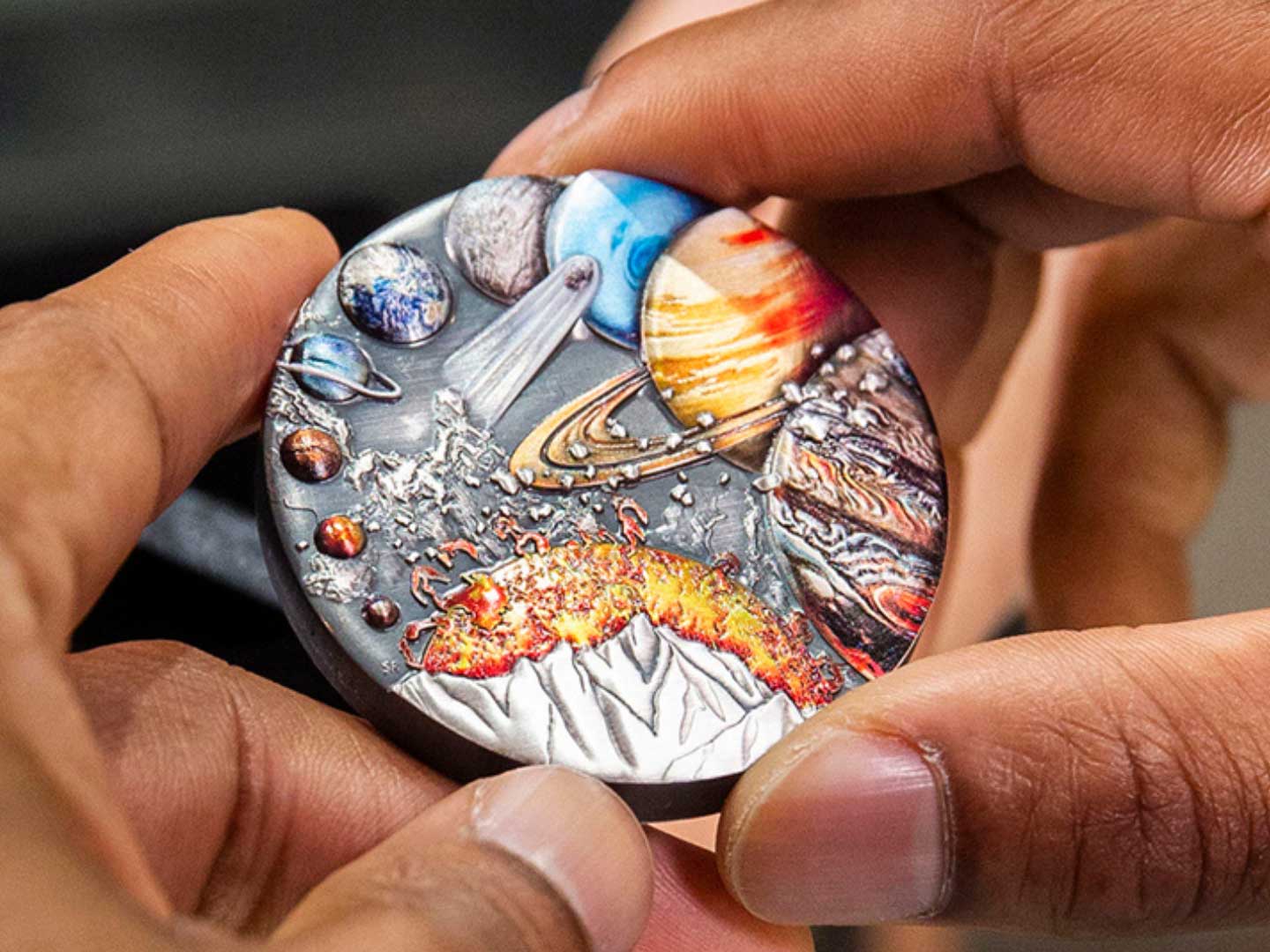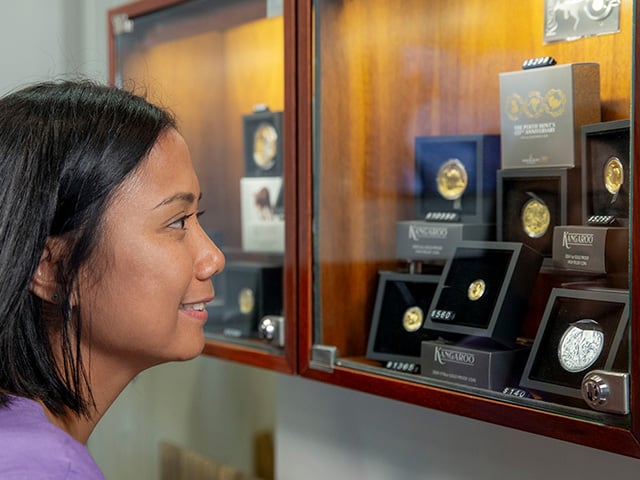What are non-circulating legal tender coins?

Non-circulating legal tender is a useful term to describe official coins that are not intended to be spent.
This may sound like a nonsense to those who only appreciate coins as money. “If it’s not made to be spent, what’s the point”, they may ask?
The fact is coins that are never circulated have been made throughout history for a number of reasons. Let’s look at a few.
Historic piedforts
In the Middle Ages, ‘piedfort’ coins were crafted for French monarchs to present to visiting dignitaries. At double the thickness and double the weight of standard coins, these distinctive pieces were designed to be demonstrations of wealth and prestige.
Proof issues
By the time mass production of coins took off in the 19th century, mints initially made a small number of test coins to check their dies for flaws or discrepancies. These pieces were often struck on specially polished blanks to ensure the design was perfectly executed and crisp.
From this arose the production of meticulously crafted ‘proof’ coins. As showpieces, they could be used to attract new business. The rise of world fairs after London’s Great Exhibition of 1851 offered mints tremendous opportunities to demonstrate the quality of their products for this purpose.
The Melbourne Mint struck proof coins from 1916, the year it took over production of the Commonwealth’s threepence, sixpence, one shilling and florin coins. A similar practice was instigated when in 1940 The Perth Mint commenced production of pennies and halfpennies. The finest examples were sent to the Royal Mint, the British Museum and other pertinent bodies in Australia and overseas.
An Australian penny of astonishing quality struck by The Perth Mint in 1945.
Such rare and beautiful pieces have always attracted the interest of private collectors who are prepared to pay significant sums to acquire them. As such, it’s not so difficult to see how exquisitely made pieces designed solely for the collector market evolved.
Modern collector coins
Non-circulating coins have become more and more popular in recent decades as mints around the world (including The Perth Mint) have responded with a seemingly endless number of design themes to cater for personal interests and passions.
As well as collectable and commemorative designs, there are several other factors that distinguish modern non-circulating coins. Among them is the use of precious metals.
Silver, a traditional monetary metal, is the most popular - not too expensive, but valuable enough to convey the feeling of something special. Much more costly, gold makes for truly spectacular collectables.
Another aspect of non-circulating pieces not found on everyday coins is the variety of high quality finishes. On top of the benchmark proof quality, mints specialising in this field have found all sorts of ways to enhance the appearance of collector coins. Popular trends nowadays include coins with coloured, gilded and antiqued surfaces.
Another factor driving the collectability of non-circulating coins – perhaps the most important of all - is rarity. Mints in Australia control this by stipulating a maximum mintage when applying to Treasury for approval to make each piece. Like any other collectable object, a coin that is beautiful, precious, and above all rare, is likely to inspire a great deal of competition among potential buyers.
The legal tender paradox
Like their circulating counterparts, collector coins are issued as legal tender. Having this official status is important to collectors because it symbolises the guarantee of the government that stands behind them.
But it also implies that they are valid as a means of settling a financial obligation. And here in lies a paradox. Non-circulating legal tender is not designed to be spent!
Face value versus issue price
To explain why you would never wish to spend a non-circulating coin, we need to differentiate between the coin’s face value and its issue price. Face value is the amount stamped on the coin, in other words its legal value, and this is mostly all you need to know about everyday coins in your pocket.

These coins are worth the dollar amount with which they are stamped. But the face value on a non-circulating legal tender coin is only a nominal figure.
In the non-circulating world, issue price is the price a collector pays to purchase the coin. All the factors discussed above feed into the issue price, which must cover everything from the cost of precious raw materials and the expert skills of the artisans involved in production, to the more intangible element of rarity.
Melt value
Non-circulating coins have a face value too – but it’s a popular misnomer to think this figure is in any way representative of its market value.
Under Australian currency legislation, the face value of a 1oz silver coin is AUD 1. For a 1oz gold coin, it is AUD 100. These nominal amounts are nowhere near the current price of gold and silver per ounce. By taking the coins to a bank or deposit taking institution, the face value is the amount you would be entitled to receive (although there’s no legal obligation for them to be redeemed by anyone).
But by selling the coin to a bullion dealer or a mint such as The Perth Mint, anyone looking to ‘cash in’ can expect to be paid the ‘melt’ value of gold or silver, an amount akin to the headline ‘spot’ rate per ounce reported on evening news bulletins, minus the buyer’s commission.
Numismatic premium
The value of non-circulating coins may also benefit from what is termed a ‘numismatic’ premium. When a limited collectable is launched, the original ‘issue’ price is fixed even if its mintage is thoroughly over-subscribed. Once the coin is sold out at the mint, however, prices may skyrocket on the secondary market (on and off-line auctions etc.) if enough collectors desire the piece and are prepared to compete on price to secure it.
In plain language, it’s possible for a low mintage collector coin to achieve at auction considerably more than its ‘issue’ price or ‘melt value’.
This is what happened to The Perth Mint’s Games Through the Ages 2022 2oz Silver Antiqued Coin. An incredibly intricate piece with a maximum mintage of 2,500, it was released in September 2022 with an issue price of AUD 259.00. The coin was announced as a sell out at the Mint in October.
A spectacular non-circulating coin, Games Through the Ages, appears to have attracted a numismatic premium on the secondary market.
At the time of writing, we couldn’t find this coin available on the secondary market for anything less than AUD 299.
And that’s just one example!
True value
This article argues that uncirculated coins are not a modern-day invention, and that history provides pointers as to how we got here – an era of unprecedented choice in numismatic products.
When it comes to pricing and valuation, we hope to have de-mystified terms including issue price, face value, melt value and numismatic premium, and shown how the market ultimately determines the price of a collectable.
We’d suggest, however, that the true value of your coins relies on something far more elusive. Each of us is drawn to collecting for personal reasons. We react to beautiful objects emotionally on a scale that’s hard to quantify.
But if a coin holds enough meaning for you to purchase it, and you decide it’s worth treasuring for life, then really it’s priceless.












